Periodontology

Periodontitis is often known as "gum disease" and is a very common condition in which the gums and deeper periodontal structures become inflamed. This inflammation of the gums, which usually takes the form of redness, swelling and a tendency to bleed during tooth brushing, is the body's reaction to certain bacteria that have been allowed to build up on the teeth as well as all prosthetic restorations (bridges, dentures, etc.). If these bacteria are left unchecked, the inflammation can spread below the gums and along the roots of the teeth, causing destruction of the periodontal ligament and supporting bone. This eventually leads to mobility and possible tooth loss.
You knew that…
That our mouths are full of bacteria? These bacteria, along with mucus and other particles, continuously form a sticky, colorless "plaque" on the teeth. Brushing and flossing remove plaque. Plaque that is not removed can harden and form "stone" that even brushing does not clean. Only a proper professional cleaning by a dentist can remove tartar.
Frequently Asked Questions
Do I need periodontal treatment ?
In every clinical examination at our office, the periodontium is checked with special devices and you are immediately informed about the health of your "gums". If periodontal disease is diagnosed, you will be informed in detail with the stages and duration of the treatment and a new appointment will be scheduled.
What should I expect during periodontal treatment?
The dentist removes the plaque through a deep cleaning method called scaling and root planing. Scaling means scraping the tartar above and below the gum line. Root planing removes dental plaque from the root of the tooth where it contributes to disease. Possible sensitivity to thermal stimuli, such as cold, may be observed in the first days after treatment. Rarely, there may also be swelling.
Should I follow any special instructions after my periodontal treatment?
The long-term success of periodontal treatment depends both on your own efforts with oral hygiene (proper and effective brushing 2-3 times a day, using dental floss and interdental brushes) and on those of the treating dentist who provides regular care and continuous assessment. After completing the first phase of treatment, the dentist should re-examine the condition of your gums at regular intervals to check that the inflammation has stopped. The frequency of follow-up appointments will depend on the severity of the disease and the individual's risk of developing the disease. Typically, reviews are scheduled every three to six months.


